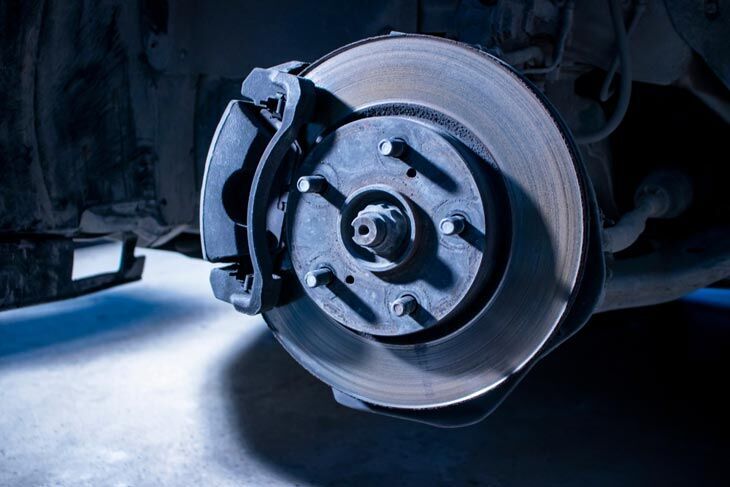Motora troksnis nav kaut kas ārpus parastā. Bet augstāks trokšņa līmenis nekā parasti var nozīmēt nopietnas tehniskas problēmas.
Un, kad tā rēciens kļūst ārkārtīgi vardarbīgs - līdz pat reālam helikopteram skaņās - tad jūs vairs nevarat noraidīt un pateikt: Nē, tas nav liels darījums!
Bet, kad jūsu automašīna, paātrinot, izklausās kā helikopters, kādi jautājumi šeit tiek spēlēti?
Kas liek automašīnai radīt šādus satraucošus trokšņus? Mūsu vadlīnijās tiks izpētīti visi iespējamie šādu galvassāpju cēloņi.
Kāpēc automašīna, paātrinot, izklausās kā helikopters?
These symptoms are pretty obvious to most drivers, as the brakes efficacy often experiences a dramatic and noticeable drop.
2. Torn Brake Rotor
Similarly, tears and cracks push the brake rotors to scrape against the discs interior compartments. These instances stem from the huge space between it and the caliper as the pad breaks out.
As a result, the brake pads come in close contact with the rotors external rears, causing your vehicle to vibrate upon brake operation. In more severe cases, it might even come to a halt.
3. Inoperative Parking Brake
Determining whether the brakes malfunction or not is quite a challenge. Still, one tell-tale signal is in the air brakes, which stay engaged even while your regular brakes do not.
Worse, sometimes the brakes even engage and disengage by themselves, which calls for professional examination from experts.
4. Bad Brakes
Poor brake conditions are signified by noticeable creases on the surface, filled with crude and rust.
Those defects keep the brakes from effective rotor grips, giving the impression that all the sounds are emanating from its engine compartments. No wonder your car sounds like a helicopter !
5. Defective Wheel Bearing
6. Broken Fan Clutch Motors and Poor-Quality Tires
Defective fan blades will produce sounds like helicopters whenever you turn your car on or off, making the car accelerate or decelerate on its whim.
In the same vein, bad tires generate loud humming noises at faster speeds and only fade away once you slow down.
Such occurrences indicate a lack of proper gripping force, which might put you in danger if not fixed right away.
7. Exhaust Leak
Exhaust leak is also a possible reason. Kāpēc tā?
Thats because the exhaust has a separate exit other than tailpipes. But unexpected leakage might cause the black smoke to flow out of the tailpipes instead, meaning all the combustible fuel is discharged here.
All these clogging exhaust pipes generate more helicopter noise from front of car .
8. Vacuum Leak
Clicking sounds also originate from vacuum leaks, though these sounds tend to occur upon acceleration only. Other activities (such as cornering or slowing down) will not suffer from any impacts.
Still, we suggest you not leave this issue untreated for too long. Otherwise, the gasoline shortage from your engine might eventually render the car inoperable.
9. Faulty Catalytic Converter
10. Engine Problems
The engine might have been malfunctioning if the RPMs undergo huge decreases whenever you push the gas pedal.
We assume insufficient engine fuel is to blame here, causing the vehicle to drive poorly (or even not at all). That explains why your car sounds like helicopter when driving .
Have a professional address the problem immediately or fix it yourself before it is too late.
11. Bad Exhaust Systems
Car accelerations generate tons of airplane noise from the tailpipes, which might allude to a seriously glitching exhaust system .
In such cases, black smoke emits at an alarming speed, probably due to unburned gasoline coursing through the system.
Aside from the smokes and weird noises, you might also take in the intense, unpleasant gasoline odors that permeate the automobile.
12 . Poor Motor Mountings
Motor mounts are a crucial automobile compartment that binds your motor firmly in place. Unfortunately, over a short period of time, road frictions cause them to wear out.
Loud banging sounds are some clear signals for these issues, which persist (or worsen) even at lower speeds. Fractures in the rotor mounts are also a transparent indicator.
13. Bad Flywheel
helicopter noise in car are also present here. Even during deceleration, they refuse to go away.14. Transmission Failure
A faulty gearbox transmits more engine power than necessary to the steering wheel, exceeding their preset limits.
The motor amplifies these crackings even further, resulting in helicopter sounds and lagging turbines.
Damaged CV joints are also another possible culprit. Their driveshaft slides off-center, blocking the path between the power source and your wheels.
As a result, the whole transmission process is severely impacted.
Nevertheless, this dilemma is not always easy to notice. Daži autovadītāji to pamana uzreiz, braucot, bet citiem ir nepieciešami padomi un ekspertu pārbaude.
15. Slikts ūdens sūknis
Jūsu transportlīdzekļu motora smagas satraukuma var nolikt līdz kļūdainiem ūdens sūkņiem, kas nesadalās nepietiekamas dzesēšanas šķidruma cirkulācijas dēļ.
Rādītāji, iespējams, nekavējoties ierodas, tāpēc no pirmā acu uzmetiena tos ir grūti noteikt. Bet laika gaitā jūs varat pamanīt automašīnu tendenci vārīties vai uzkarst pēc vienas vai divu stundu ilgas braukšanas.
16. Aizdedzes spoles trūkumi
Neviens laika šķīdums tikai pasliktina spoļu apstākļus. Tas nodrebēs ik pēc dažām minūtēm un pat atteiksies sākt aukstā laikā.
17. Motora nesošo defektu
Motora gultņi nodrošina, ka automašīna griežas ir kontrolētas. Turpretī nestandarta veidi rada papildu berzi uz motora un izraisa pārmērīgu turbulenci.
Also, keep in mind that numerous accidents have occurred to drivers who fail to replace motor bearings on time, since these busted vehicle parts equate to a much higher tendency to slip on the road.
Kā salabot helikoptera skaņas?
2. solis noņemiet un nomainiet filtru.
3. solis . Atbrīvojieties no vecās pārnesumkārbas pannas blīvējuma, lai uzstādītu jaunu. Pēc tam pieskrūvējiet pannu un piepildiet to ar ATF.
4. solis. Sāciet automašīnu un sekojiet līdzi iespējamām noplūdēm.
5. solis. Notīriet putru ar kaķēna pakaišiem.
2. Mainiet uz jauniem riteņu gultņiem
3. Nomainiet CV asi
Step 5. Reinstall the Axle Nut
First, use your bare hands (instead of any instrument) to reinstall the axle nut. This method might be a bit time-consuming, but it will keep cross-threading risks at bay.
Next, screw it back in compliance with the manufacturers torque specifications (usually from 121 to 141 foot-pounds). Finally, tighten the wheel before gradually lowering the vehicle back to the ground.
When driving for the first time, pay attention to any usual sounds. If helicopter noises are still clicking, maybe its time to recheck all the work you have done or bring the car to a repair shop.
Secinājums

Our article has explained why a car sounds like a helicopter when accelerating and delivers several promising solutions.
Lielāko daļu problēmu var veikt mājās diezgan labi, taču jums vajadzētu pievērsties profesionālai palīdzībai, ja jūsu mehāniskās prasmes un kompetence ir zemāka par vidējo.
Otherwise, these dilemmas might get worse.
